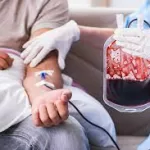In a concerning public health development, the European Centre for Disease Prevention and Control (ECDC) has reported a substantial increase in sexually transmitted infections (STIs) across Europe in 2022. Notably, cases of gonorrhea surged by nearly 50%, while syphilis and chlamydia cases rose by 34% and 16%, respectively.
ECDC Director Andrea Ammon emphasized the urgent need for attention and action to address this alarming trend. “Untreated STIs can lead to serious health complications,” she warned, citing chronic pain, infertility, and severe neurological and cardiovascular issues, particularly in cases of syphilis.
The report also highlighted sharp increases in lymphogranuloma venereum (LGV) and congenital syphilis, although these cases originated from lower initial levels. While STI rates had been on the rise for years, the COVID-19 pandemic had temporarily stalled this trend due to social isolation measures and decreased reporting rates. The recent surge, however, is attributed to several factors, including enhanced surveillance, increased home testing, and riskier sexual behaviors as societies return to pre-pandemic norms.
Particularly concerning is the notable rise in infections among young heterosexual individuals, especially young women, reflecting potential shifts in sexual behavior following the pandemic. While there is currently no evidence to suggest that antimicrobial resistance is driving the increase in gonorrhea infections, the ECDC remains vigilant in monitoring this critical aspect.
Experts stress that the reported figures likely represent only a fraction of the total infections, as many cases remain undetected. They underscore the importance of implementing effective testing, treatment, and prevention strategies to combat STIs. Individuals are urged to prioritize protective measures, such as using condoms, to reduce the risk of transmission and safeguard their health.
As Europe grapples with this public health challenge, the ECDC’s call to action highlights the need for coordinated efforts to improve awareness, access to testing, and treatment options to stem the tide of STIs across the continent.











